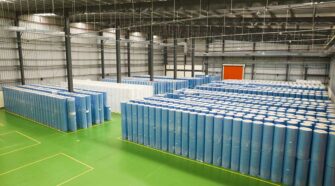Nonwoven

IDEA25: Bringing Big Ideas for a Sustainable Future to the Nonwovens Industry
Big ideas come from many sources, but great big ideas come to life when strategic partners leverage collaboration in its highest form, including face-to-face networking, sharing of business intelligence, and …

Working Smarter: Manjushree Spntek Expands Into Value-Added Products to Address Nonwoven Fabric Overcapacity
Executive Q&A with Rajat Kumar Kedia, Managing Director, Manjushree Spntek Pvt. Ltd., India To survive intense competition due to overcapacity in the Indian as well as the global nonwovens fabrics …

Autotech Nonwovens Advancing Industrial Textiles
Q&A with Ankit Desai, Managing Director, Autotech Nonwovens India-based Autotech Nonwovens is a leading manufacturer of nonwovens and advanced materials with applications in automotive, filtration, footwear and other industrial applications. …

Polyolefins
Low-Cost Fibers for a Diverse Range of Commodity Products Far from being the most glamorous fiber on the market, polyolefin fibers are nevertheless an important material for the technical textiles …

Europe’s Hygiene Outlook
Trends, Challenges and Opportunities on Stage at EDANA’s Outlook™ 2024 in Rome Hygiene is in the hot seat in Europe, according to presenters at EDANA’s OUTLOOK™ 2024, held this fall …

